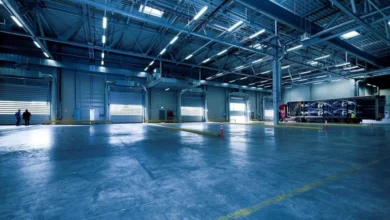How to Utilize Architectural Louvers Efficiently
When it comes to architecture, beauty is nothing without functionality. Buildings and structures need to be, first and foremost, useful and functional. Aesthetic is simply secondary.
To ensure your structure is built as effectively and as efficiently as possible, it is integral that you think about all elements of the design. What materials are the best to use for insulation? What’s the optimum size of window for energy efficiency? How can I ensure the building withstands the tests of time?
When considering your design, you also need to consider what type of property it will be. For buildings that will be used by lots of people – such as houses, offices, restaurants, and hotels – there are certain compliancy elements you also need to think about.
And one of those major elements is ventilation.
Ventilation is integral for the success of any people-centered business. If a restaurant’s kitchen is noisy and hot, both staff and customers will feel uncomfortable. If hotel rooms are stuffy and damp, guests will go elsewhere for their next trip. Homes that have poor ventilation can easily become damp and energy inefficient – meaning they’ll rapidly deplete in value.
Ensuring your structure is designed with proper ventilation is particularly essential if you’re building residential properties for someone else.
A good way to achieve proper ventilation in a new building is through architectural louvers. These devices come in plenty of styles, colors, and types, meaning there will definitely be something that works with your design. As well as something that adds functionality.
Fixed louvers, for example, are great for residential apartment blocks. As the name suggests, these devices do not move and can be installed in high places to exhaust air as the heat rises. For high-rise blocks, the louvers will withstand the wind and protect the structure from adverse weather. As the architect, you’ll need to ensure that you find a louver that meets your budget but one that also offers the functionality you need.
Fixing louvers to higher levels is good practice for any structure. As heat rises, it will escape out of the louvers and help to regulate the temperature of the building. Installing louvers instead of a full ventilation system can save you – or your contractor – huge amounts of money, as you won’t need to rely on power to remove old stuffy air.
Louvers can also come in smaller sizes for houses. Colors can vary and be designed to complement the external color of the property – meaning they can add a contemporary style yet practical function to the home.
What’s more, louvers for residential properties can help to bring natural light in. Some louvers can be adjusted like shutters to help you keep in control of the amount of light or shade provided. This is great for buildings in extreme weather settings as you can adjust the shutters in the different seasons.
There are other louvers that stop rain coming in. This is ideal for communal areas or anywhere that could be damaged by water.
As you can see, there are plenty of ways to utilize louvers in architecture. The best idea is to do plenty of research into the cost, climate, and the local area before starting your design.






